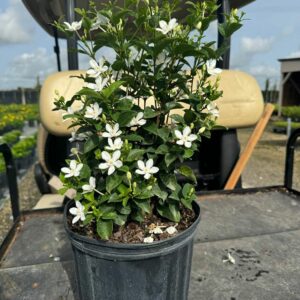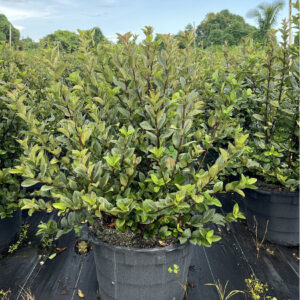
Argentine Seeds
Argentine bahiagrass (Paspalum notatum ‘Argentine’) is a warm-season perennial grass ideal for lawns, pastures, and erosion control. Thriving in warm, humid climates and USDA Hardiness Zones 7 to 11, it prefers well-drained soils with a pH of 5.5 to 6.5. Plant seeds in late spring to early summer, keeping the soil moist until established. It requires minimal maintenance, with good drought and pest resistance. Regular watering, periodic fertilization, and mowing to 2-4 inches will ensure healthy growth. Known for its lush, dark green color and durability, Argentine bahiagrass is excellent for erosion control and withstands heavy traffic.
$632.00
Related products
-
All Products
Asian Snow Jasmine
$24.90 This product has multiple variants. The options may be chosen on the product page -
All Products
Viburnum Suspensum
$36.20 – $253.53 This product has multiple variants. The options may be chosen on the product page
Argentine bahiagrass (Paspalum notatum ‘Argentine’) is a warm-season perennial grass known for its lush, dark green color and suitability for lawns, pastures, and erosion control. Here’s detailed information about growing Argentine bahiagrass:
Growing Argentine Bahiagrass
Seed Selection and Preparation:
Seed Quality: Choose high-quality seeds from reputable suppliers for better germination rates.
Seed Preparation: Scarify seeds to break the hard seed coat, enhancing germination.
Planting:
Timing: Plant seeds in late spring to early summer when soil temperatures are consistently warm (above 65°F).
Seed Rate: For lawns, use about 5 to 10 pounds of seed per 1,000 square feet. For pastures, 20 to 30 pounds per acre.
Depth: Sow seeds at a depth of 1/4 to 1/2 inch.
Method: Seeds can be broadcasted or drilled into the soil. Ensure good seed-to-soil contact by lightly raking or rolling after seeding.
Soil and Site Preparation:
Soil Type: Prefers well-drained sandy or loamy soils but can tolerate a variety of soil types.
pH Level: The ideal soil pH is between 5.5 and 6.5.
Preparation: Clear the area of weeds and debris, and till the soil to a fine texture.
Climate and Hardiness
Climate:
Argentine bahiagrass thrives in warm, humid climates.
It is well-suited to regions with hot summers and mild winters.
It has good drought tolerance once established but benefits from regular watering during dry periods.
Hardiness Zone:
USDA Hardiness Zones 7 to 11 are ideal for Argentine bahiagrass.
It can survive short periods of frost but performs best in frost-free areas.
Maintenance and Care
Watering:
During establishment, keep the soil consistently moist.
Once established, water deeply but infrequently to encourage deep root growth.
Fertilization:
Apply a balanced fertilizer at planting time.
Follow up with periodic applications of nitrogen-rich fertilizer during the growing season to promote lush growth.
Mowing:
Maintain at a height of 2 to 4 inches for lawns.
Mowing helps control weeds and encourages dense turf growth.
Weed Control:
Use pre-emergent herbicides to prevent weed seeds from germinating.
Hand-pulling or spot treatments with post-emergent herbicides can control established weeds.
Additional Information
Pest and Disease Resistance: Argentine bahiagrass is generally resistant to pests and diseases, making it a low-maintenance choice.
Erosion Control: Its deep, extensive root system makes it excellent for erosion control on slopes and embankments.
Environmental Tolerance: It is tolerant of poor soil conditions, heat, and drought, making it suitable for challenging growing environments.
Benefits
Aesthetic Appeal: It has a lush, dark green color that enhances the appearance of lawns.
Low Maintenance: Once established, it requires minimal care compared to other turfgrasses.
Durability: It withstands heavy traffic and grazing, making it suitable for lawns, pastures, and recreational areas.
Ecological Value: Provides habitat and food for wildlife, including pollinators and grazing animals.
Argentine bahiagrass is a resilient and attractive grass that offers numerous benefits for various applications. With proper establishment and care, it can create a durable and visually appealing landscape.
| Ib | 50lbs |
|---|


